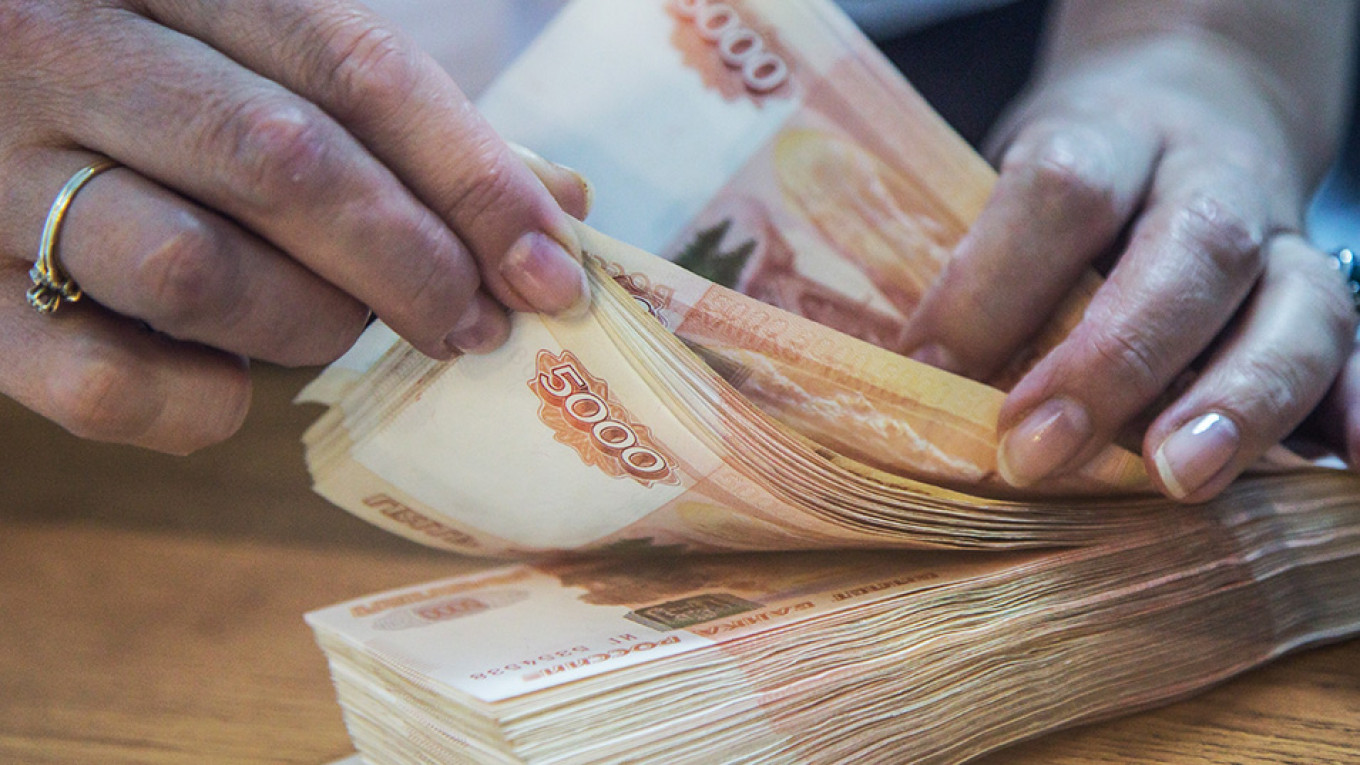
With time running out on his final term as president, Vladimir Putin evidently wants to end it with a boom.
Putin has been a cautious steward of Russia’s $1.7 trillion economy, partly to shield it against blowback from his more adventurous foreign policy. For the last five years, he’s imposed some of the world’s toughest budget austerity. Combined with high interest rates, that’s made Russia a favorite of carry-trade investors — but it’s left living standards mired at 2012 levels and economic growth stuck below 2%.
Now, the president is changing course — and channeling an economist whose pro-growth ideas are mainstream almost everywhere else: John Maynard Keynes. Putin just appointed a new cabinet stacked with advocates for more government spending and investment, a Keynesian recipe. And he’s told them to hurry up about it.
In power for 20 years, Putin gets credit at home for steadying an economy that suffered a decade of chaos and debt default after the Soviet Union collapsed. But lately, stability has threatened to turn into stagnation.
Until now, the government hasn’t rushed to the rescue. It’s pared borrowing to a minimum in the last five years, and has been stashing any spare cash from Russia’s commodity exports into a massive rainy-day fund.
“Russia’s first priority was to secure its borders to reduce its vulnerabilities,” said Elina Ribakova, deputy chief economist at the Institute of International Finance in Washington. “At the time, it would’ve been wrong to lean on Keynesian theories. Now they’re so comfortable on that front that it’s time to start thinking about how to boost potential growth.”
‘Feel the change’
Western sanctions and volatile oil prices have been a key reason for Putin’s “fortress Russia” approach, which aimed to make the economy self-sufficient. But the turn to Keynesian stimulus shows that Russia isn’t walled off from wider currents of economic thinking. There’s been a similar shift in other countries.
The U.S. has widened budget deficits even after a decade-long expansion, and the U.K. and Germany have begun to shift away from austerity. India and Turkey are trying to boost growth via fiscal policy.
At the first meeting of Russia’s new government, Prime Minister Mikhail Mishustin said he wants to get the spending spree underway quickly. Russians should “feel the changes in their lives and surroundings in the near future,” he said.
Mishustin has appointed former Kremlin adviser Andrey Belousov, who’s lobbied for more government borrowing and spending, as his deputy premier. Evgeny Yasin, a director at Russia’s Higher School of Economics and one of the country’s most prominent economists, calls Belousov a “Russian Keynesian.”
“Russian political changes at this moment have one goal: to boost economic growth,” Billionaire Oleg Deripaska, founder of aluminum producer United Co Rusal Plc, told Bloomberg Television in Davos.
There are limits to how far he can loosen the purse-strings. The government is sticking to a budget law that says revenue from oil above $42 a barrel (it currently trades around $61) must be saved, not spent.
Still, extra spending this year could total 2.1 trillion rubles ($34 billion), or 1.3% of gross domestic product, according to calculations by ING Groep NV in Moscow. The government will likely tap its rainy-day fund and release about 500 billion rubles left over from last year’s budget, which posted a surplus equal to 1.8% of GDP.
Any means necessary
A key part of the fiscal push will be speeding up an existing plan to invest $400 billion in things like highways, housing and ports over four years. The so-called National Projects got mired in bureaucracy and made little progress in 2019.
Other elements are new. Putin proposed last week to spend about $65 billion through 2024 on expanding benefits for families and the poor.
Putin’s growth program relies mainly on state spending because increased pressure on business and a still-uncertain sanctions outlook has stalled private-sector investment.
Central Bank Governor Elvira Nabiullina argues that Russia needs structural reform aimed at improving the business climate and increasing competition. Putin has long claimed to support such measures, but never made much progress on implementing them.
“This isn’t a market economy,” and Putin doesn’t follow any particular economic principles, Yasin said. The president “uses any methods that seem necessary to him in order to maintain full control.”
His latest methods may not deliver much of a boost right away. Budget easing will probably add 20 or 30 basis points to economic growth rates in the short term, according to Bloomberg Economics.
But as Keynes always argued, spending is better for growth than squirreling away money. Markets have generally welcomed the shift — including even some of the bond investors who’ve reaped rewards from years of tight policy.
Russian austerity was geared all along to “preparing for a future crisis,” said Oleg Shibanov, a finance professor at Moscow’s New Economic School.
“Russia is prepared now,” he said. “I expect that there’ll be more spending and more investment.”
